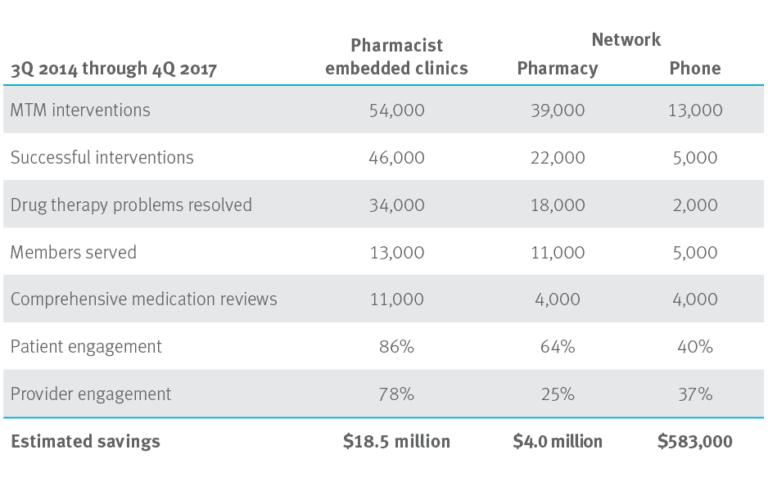Perspectives
Complete pharmacist integration delivers big results, Part 1
Blue Cross & Blue Shield of Rhode Island: Found $23 million in savings
April 30, 2018New England has a knack for building championship teams, combining a passion for excellence and flawless execution. When taking the pharmacist integration program from a concept into the execution phase at BCBSRI, success hinged on finding all-star talent in the market.
One notable addition to the team was pharmacist Kenny Correia, a successful early adopter and advocate of medication therapy management since its inception under the Medicare Modernization Act. Since 2014, the pilot program has placed 13 pharmacists in clinics to work face-to-face with prescribers and patients to improve patient care and control costs. To date, there has been more than $23 million in savings through the patient-centered pharmacy program.
Face-to-face pharmacy
Prescription medicine is playing an ever-larger role in health care. The program showed that an onsite pharmacist in an integrated care team improves care coordination. Improved coordination is particularly important for patients with multiple prescribers and chronic conditions.
One example: Onsite pharmacists manage blood-clotting metrics (INRs) for patients with cardiovascular disease who take anticoagulation drugs. Personal contact and encouragement during weekly weigh-in calls and blood pressure readings builds trust. That trust is important as statin-intolerant patients try different statins before transitioning to PCSK9s.
“Every day, I use my clinical skills and patient engagement techniques. I get to do what we do really well, which is patient education — taking time to explain things to patients,” said Kenny.
An onsite fixer
Onsite pharmacists also bring a knowledge base that helps quickly resolve cost or coverage issues. Proactively addressing prior authorizations and exceptions, for example, improves patient satisfaction. It also increases the practice’s formulary compliance, which saves time and money.
“When we recognize that a patient is not on the right formulary drug, in the past we have often not made the effort to reach out to make the proper changes,” said Dr. Rex Appenfeller, Internal Medicine at Anchor Medical. “Having Kenny’s ability to speak or meet with the patient allowed us to do a much better job staying with the formulary.”
Results beyond expectations
As part of the program, the pharmacists engaged in nearly 73,000 medical and pharmacy claims. The estimated savings approached $23.2 million over three and a half years.
Total cost of care avoidance savings

“This program is changing how care is delivered and redefining the profession of pharmacy, promoting the cognitive services a pharmacist can provide. These pharmacists are operating at the top of their license,” said Michael Kolodij, manager of pharmacy Programs for BCBSRI. “The clinics have embraced the pharmacists as part of the team and are out there doing incredible work. They are truly making a difference.”
Related news
Perspectives
July 25, 2024
Quarterly Drug Pipeline: July 2024
Clinical insights and competitive intelligence on anticipated drugs in development
Perspectives
July 22, 2024
Oncology Insights: 2024 ASCO Annual Meeting key findings
Findings from this year’s American Society of Clinical Oncology (ASCO) Annual Meeting will likely lead to clinical practice changes and U.S. Food and Drug Administration (FDA) drug approvals or expansions
Perspectives
July 16, 2024
LISTEN NOW: Beyond the business – Stories of corporate kindness | Pharmacy Friends Podcast
In this episode, we talk about how our employees' help goes beyond our work in health care, aiding in philanthropic efforts